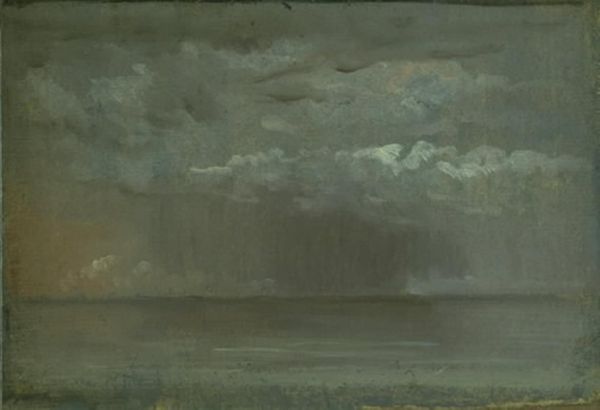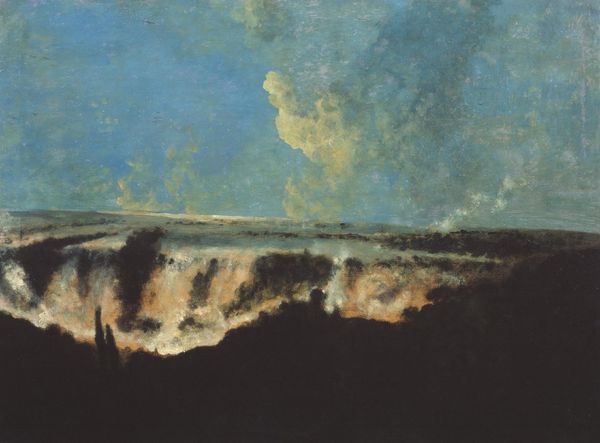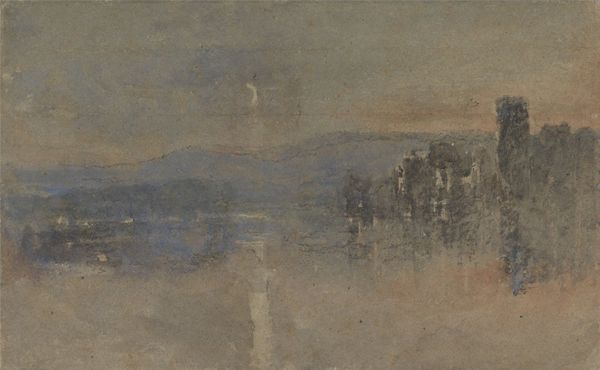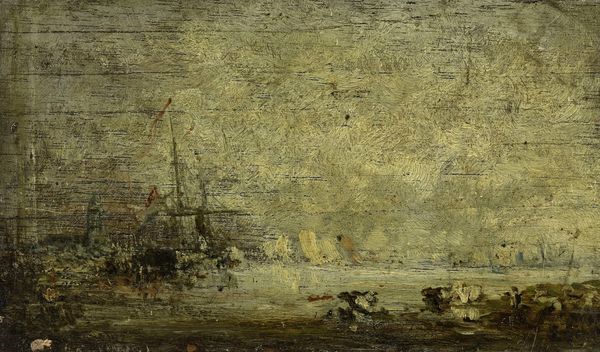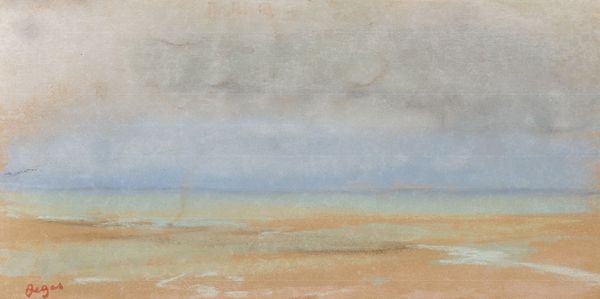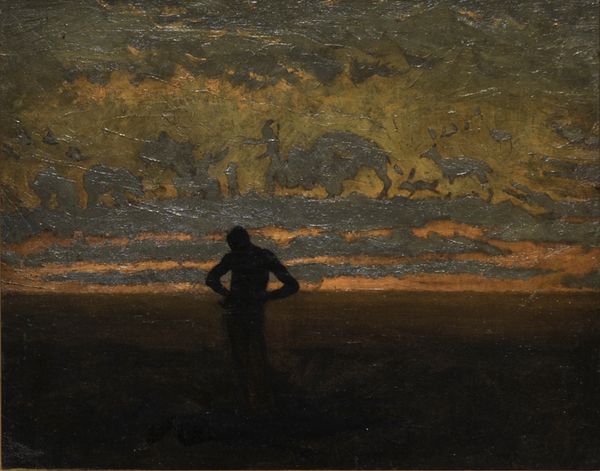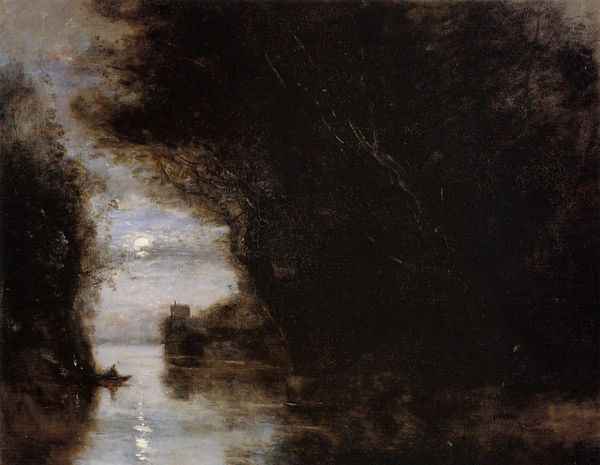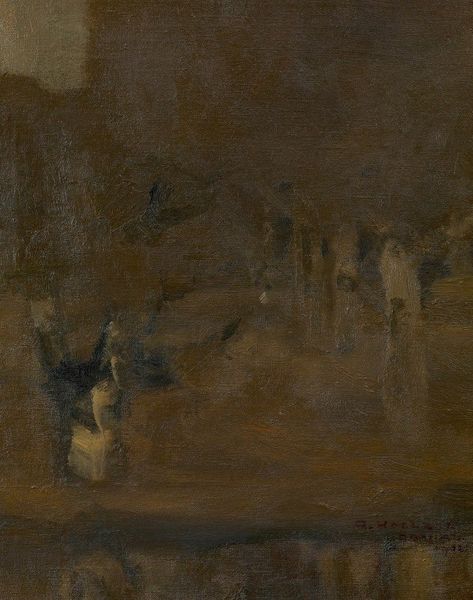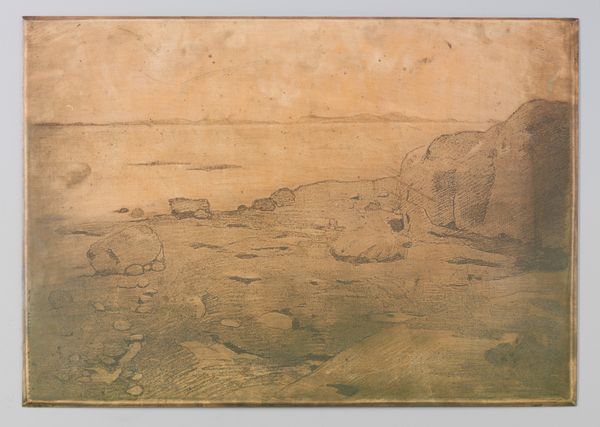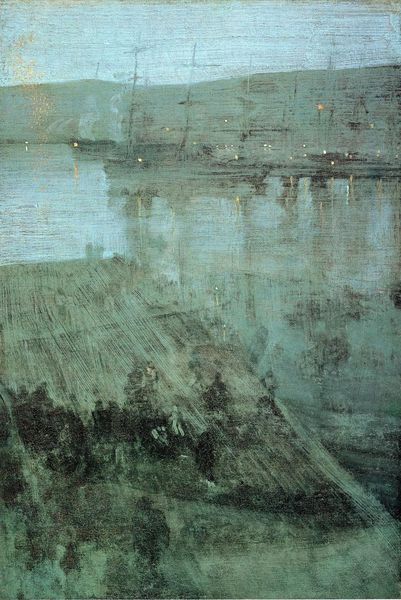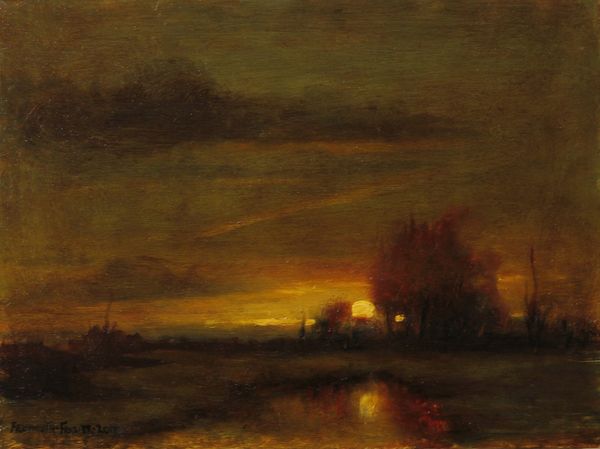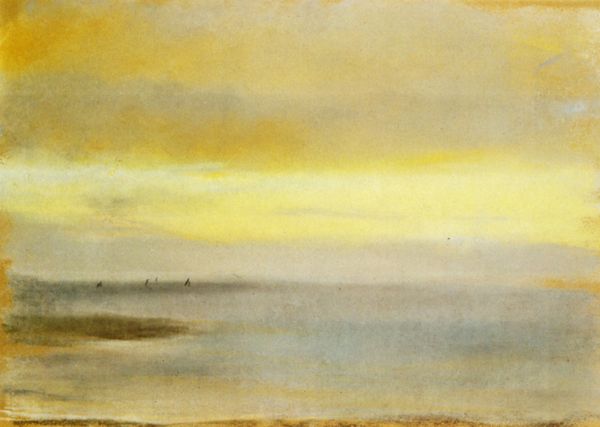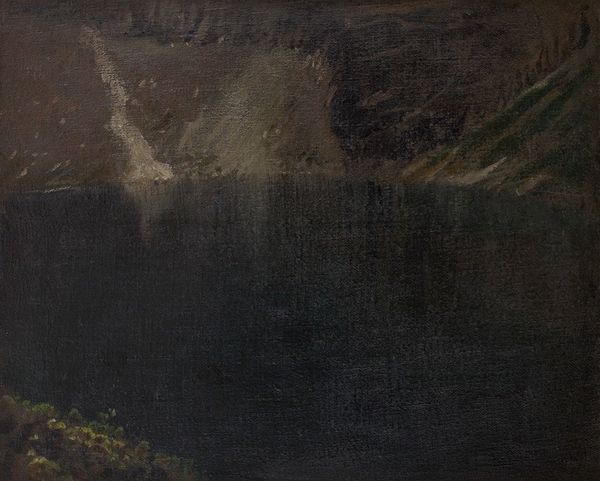
Dimensions: 19.1 × 35.9 cm (7 1/2 × 14 1/8 in.)
Copyright: Public Domain
Curator: Sanford Robinson Gifford's "Cows in a Pond at Sunset," painted around 1860, offers a tranquil view of rural life, showcasing his skill with oil paint and subtle light effects. What are your immediate impressions? Editor: My first reaction is to the palpable stillness, a deep sense of quietude. The hazy light seems to soften every edge, giving the scene an almost dreamlike quality, which brings some interesting observations in formal structure. Curator: Gifford was deeply embedded in the Hudson River School's ideals, emphasizing the beauty and sublimity of the American landscape, although that sublime aesthetic is often tied to the narratives of nation building. He used a series of layered, atmospheric glazes here that create the luminous effect. Note, too, how depictions of labor or infrastructure appear at a distinct minimum. Editor: Yes, those layers really build the mood. Structurally, it’s the contrast between the soft, diffuse light above and the darker, almost opaque reflections in the water that I find compelling. And yet the cows and landscape serve a picturesque sensibility that’s undeniably soothing. Curator: What fascinates me is the choice of subject matter - cows are so incredibly quotidian. I can't help wondering if there were broader social or economic considerations during this period that made rural scenes such potent and peaceful iconography to the growing American population. Also, note how this period of history—roughly coinciding with the rise of industry—starts impacting subject matter, pushing artistic movements away from explicit portrayals of labor towards those more allegorical. Editor: I can’t deny the thematic interpretation is strong. Yet even isolated, the brushstrokes create an evocative atmosphere that is hard to shake. The slight ripples on the water and almost indiscernible light gradients show a dedication to realism, even as those aspects border on romanticized memory. Curator: Absolutely, although it's key to acknowledge that even something as 'real' as brushstroke and gradient still come from particular cultural conditions. It is important that it reflects artistic agency and not a mimetic process of only technical ingenuity and observational acumen, or merely a personal response on the artist's part. The canvas speaks through many cultural moments. Editor: Very true. Ultimately, Gifford captured a transient moment in nature and American life, blending realism with an undercurrent of idealism. Curator: Indeed. Viewing the work today certainly adds multiple dimensions, as you said—material as well as experiential and beyond.
Comments
No comments
Be the first to comment and join the conversation on the ultimate creative platform.
